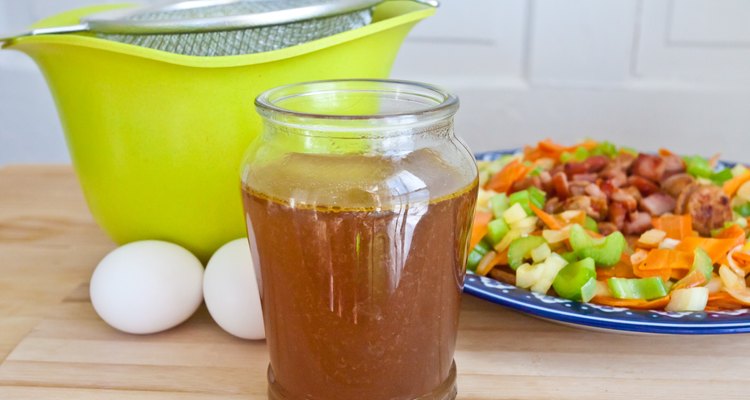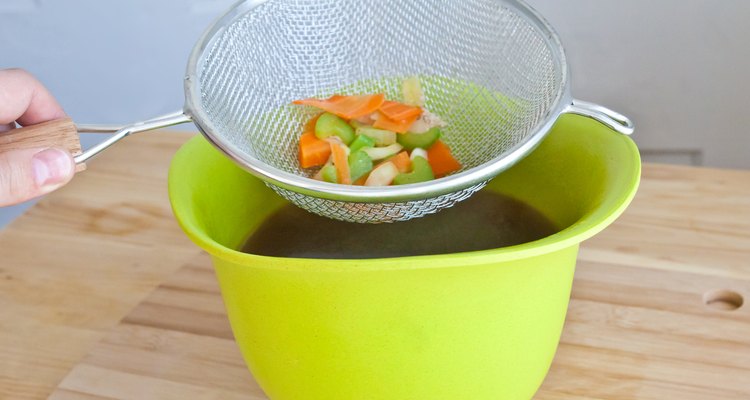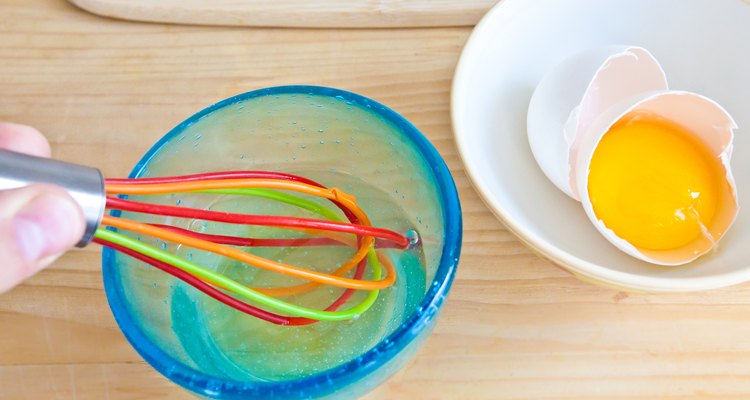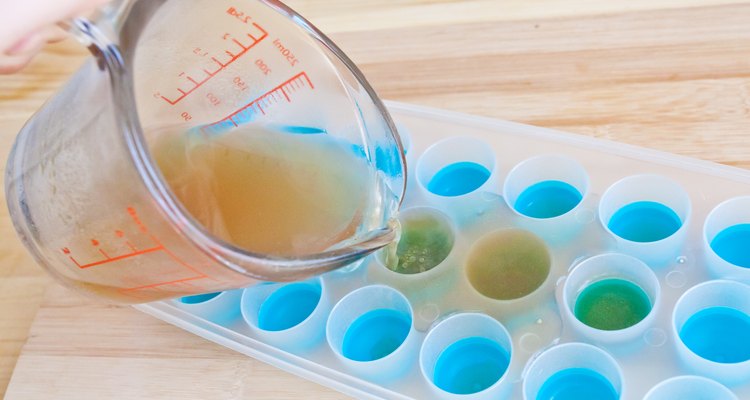
Simmering ingredients such as protein, vegetables and herbs results in a flavorful liquid that often is cloudy and full of tiny particles and may taste far better than it looks. Clarifying stock means exactly that: making the stock clear. Removing the particulate matter leaves you with a delicately clear liquid ready to be seasoned and served, or reduced to create a sumptuous gravy or sauce.
Skim the Top

The first step in clarifying stock is to skim it while you are creating it. Simmer the protein, vegetables and herbs. When you see a soft foam appear across the top of the pot, skim it off with a small, fine-mesh sieve. Do this repeatedly as the stock cooks to remove as much particulate matter as possible. You also may let the stock cool and skim the fat off of the top with a sieve or slotted spoon, although this does not get all of the little particles, leaving you with a slightly cloudy stock.
Strain the Stock

Once the stock ingredients have given up all of their flavors, strain the contents of the stock pot through a fine-mesh colander. Do this several times, rinsing out the colander between each straining. This helps remove all of the larger ingredients as well as the smaller ones that tend to sink to the bottom of the pot.
Clarify With Egg Whites

The most important step in clarifying your stock is to make an egg raft after you have strained it thoroughly. Bring the stock to a low boil. Beat two egg whites until they are fluffy and drop them into the bubbling stock. Remove the stock from the heat and let it cool. As the stock cools, the albumen in the egg whites attracts the particulate matter. You also can add raw ground chicken or beef to the egg whites and float them on top of the stock to help clarify it. Scoop the protein raft carefully out of the pot. Line the fine-mesh sieve with a layer or two of tightly-knit cheesecloth and strain the stock a final time to get it perfectly clear.
Tips and Hints

Avoid boiling stock when it is first being created because this can contribute to a cloudy appearance. Simmering it very gently allows the full flavor to develop over time without dislodging as many fragments from the protein, vegetables and herbs being cooked. Drop an ice cube into hot stock after you skimmed it. This solidifies the fat, making it easier to scoop out. Freeze clarified stock in an ice-cube tray, transferring the cubes to plastic zipper bags when they are frozen through. Label the bags; these are homemade starters for soups and sauces. Do not salt or season stock you intend to reduce or the saltiness and other flavors may become too intense.
Related Articles

How to Make and Use Aspic
How to Make Turkey Stock from Leftover ...

How to Thicken the Stock of Chicken & ...

How to Make a Roux to Thicken Up Soup

How to Reduce Chicken Stock to a Third

How to Make Fish Stock

How to Cook Vegetables With Progresso ...

How to Freeze Homemade Vegetable Stock

Vegetarian Substitutes for Chicken Broth

How to Make Soup Out of Pulp From ...

How to Make Celery Soup

How Do I Cook Pork Spine?

How to Remove Fat From Soups and Sauces

How Long Do You Cook Shank Meat for ...

How to Add Noodles to Soup

Can You Substitute Margarine for ...

How to Tenderize Gizzards
How to Boil Whole Chicken Giblets

How to Cook Dried Abalone

What Are Chicken Granules?
References
Writer Bio
Brynne Chandler raised three children alone while travelling, remodeling old homes, taking classes at the Unioversity of California Northridge and enjoying a successful career writing TV Animation. Her passions include cooking, tinkering, decorating and muscle cars. Brynne has been writing fun and informative non-fiction articles for almost a decade. She is hard at work on her first cookbook, which combines healthy eating with science-based natural remedies.
Photo Credits
Laura Beth Drilling/Demand Media